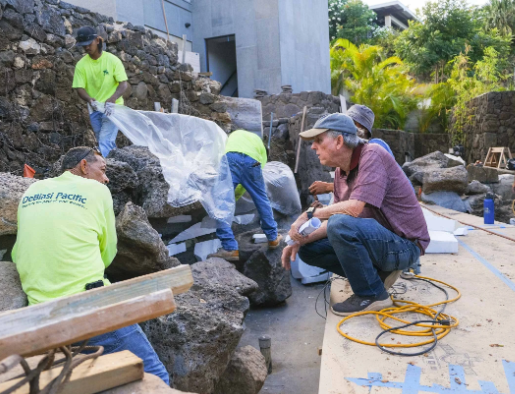Landscape architecture construction is a vital aspect of creating functional, aesthetically pleasing outdoor spaces. This field combines art and science to design landscapes that enhance the environment while meeting the needs of the community. Whether it’s a park, garden, or urban plaza, understanding the nuances of landscape architecture can help in crafting beautiful spaces that positively impact people’s lives.
Design Principles in Landscape Architecture
The foundation of landscape architecture lies in fundamental design principles, including scale, proportion, balance, and harmony. These elements guide landscape architects in creating outdoor spaces that feel cohesive and inviting. For instance, scale refers to the size relationship between elements in the landscape and their surroundings, ensuring that structures fit harmoniously within the natural scenery. Balance, whether symmetrical or asymmetrical, helps achieve visual stability. By mastering these principles, landscape architects can transform a simple patch of land into a vibrant, engaging space that encourages interaction and enjoyment.
Sustainable Practices in Construction
Sustainability is increasingly at the forefront of landscape architecture construction. As environmental concerns grow, landscape architects are focusing on practices that minimize ecological footprints and promote biodiversity. Techniques such as using native plants, implementing rain gardens, and designing for water conservation are essential for creating sustainable landscapes. By selecting plants that naturally thrive in the local climate, architects can reduce water usage and maintenance efforts. Additionally, these practices help preserve local ecosystems, ensuring that green spaces contribute positively to the environment.
The Role of Technology in Landscape Architecture
Technology plays a crucial role in modern landscape architecture construction, enhancing both design and execution. Tools such as Geographic Information Systems (GIS), 3D modeling software, and drones revolutionize how architects plan and visualize projects. GIS allows for detailed analyses of land topography and conditions, aiding in informed decision-making. Meanwhile, 3D modeling helps clients visualize designs before construction begins, reducing misunderstandings and rework. Drones can even assist in surveying land accurately and efficiently. By leveraging these technologies, landscape architects can create innovative, functional, and beautiful spaces that meet contemporary demands.
In conclusion, landscape architecture construction is an exciting and evolving field that combines creativity and practicality. By understanding design principles, incorporating sustainable practices, and harnessing technology, landscape architects can shape the future of our outdoor environments. Whether you’re a budding architect or simply passionate about outdoor spaces, exploring this field will undoubtedly inspire you to appreciate the beauty and functionality of landscapes in your community. If you’d like to learn more about this topic or see examples of inspiring landscape designs, consider reaching out to a local landscape architecture firm or visiting public parks to observe these principles in action.

